EOS got you this far. But how can you scale it?


If you're a leader or part of a team using the Entrepreneurial Operating System (EOS), you've likely seen some real benefits. You've brought structure, improved accountability, and disciplined your meetings. That's fantastic! You clearly understand the importance of discipline, regular check-ins, and clear tasks. You've built a solid foundation, and you're doing a lot right.
But maybe, as your company has grown, you've started to feel some friction. The system that worked so well for one team feels clunky across multiple departments. You suspect people are solving problems someone else already cracked, or worse, critical problems aren't being addressed at all because they don't fit neatly into a "To-Do."
If that sounds familiar, it doesn't mean EOS is bad, or that you've failed. It means you've grown! And now you need a system that can grow with you. Factor isn't about discarding everything you've learned and built with EOS; it's about evolving to a system designed for the complexity of a growth-oriented organization. It keeps the core value of structure and accountability you appreciate, but applies it in a way that is flexible, scalable, and fundamentally focused on solving complex problems and aligning the entire organization.
Making the transition is likely easier than you think, building on the disciplined habits you've already established.
Why EOS is a great start - and how it strains as you grow
Leaders are drawn to EOS for good reasons. It provides a clear, prescriptive framework that can cut through chaos and bring focus, especially in smaller or single-team environments.
However, EOS's design, primarily focused on single-team execution and tactical accountability, begins to strain as organizations grow. The very strengths that make it effective at a small scale can become limitations when faced with the complexity of multiple teams, cross-functional initiatives, and the need for deeper strategic problem-solving.
Here's a look at what works well in EOS, and how it begin to break down as your company scales:
Beyond these specific dimensions, two major problems emerge as companies scale with a system like EOS:
- The Alignment Gap: This is perhaps the biggest challenge as companies scale. How do teams working on different pieces of the puzzle stay aligned? How do they share learnings, avoid duplicating efforts, or collaborate effectively on initiatives that span departments? EOS doesn't provide a clear mechanism for this cross-team visibility and alignment.
Similarly, how does the company's overall strategy connect clearly to the work happening in individual teams? How does critical information, feedback, and emerging challenges flow smoothly from the front lines up to leadership?
- The "Type 2 Error" Problem: This is a direct result of poor alignment and knowledge sharing. A "Type 2 Error" in this context is either solving a problem that someone else in the organization has already solved, or failing to solve a critical problem because it falls through the cracks between teams or responsibilities. It's incredibly wasteful and demotivating.For example, EOS users at scaling organizations say things like:
- Consultant: "I just spent two months developing a new market entry strategy, only to find out at the annual offsite that Susan's team solved this exact problem last year. All that time wasted."
- Engineer: "I'm building this new internal tool, but I have a nagging feeling someone else might have already built something similar. Or maybe there's a critical bug in production that no one owns fixing?"
- Product Manager: "We keep getting customer complaints about X, but it doesn't fit neatly into any one team's 'Rocks.' Who's actually working on solving this?"
- Salesperson: "I'm losing deals because I don't have good answers to objection Y. I bet marketing or product has the info, but I don't know where to find it, or if anyone is even working on creating it."
- Ops: "We need a better process for Z, but I don't know if another team already has a good one, or if this critical process gap I see is even on anyone's radar."
EOS, focused primarily on single-team execution, doesn't inherently prevent these costly silos and missed connections, nor does it provide a clear system for identifying and tackling problems that span boundaries or fall into organizational white space.
Factor: evolving your rhythms for scalable performance
Again, if you've hit these scaling challenges with EOS, it doesn't mean you failed; it means you've grown! And now you need a system that can grow with you.
Factor isn't about discarding everything you've learned and built with EOS; it's about evolving to a system designed for the complexity of a scaling organization.
Factor retains the core value of structure, cadence, and accountability that you appreciate, but it applies these principles in a way that is flexible, scalable, and fundamentally focused on solving complex problems and aligning the entire organization, not just executing within a team.
For example - as organizations grow, new layers emerge, and leadership must adapt its function to each layer in order to maintain velocity and alignment.
Factor provides clarity for five leadership levels:
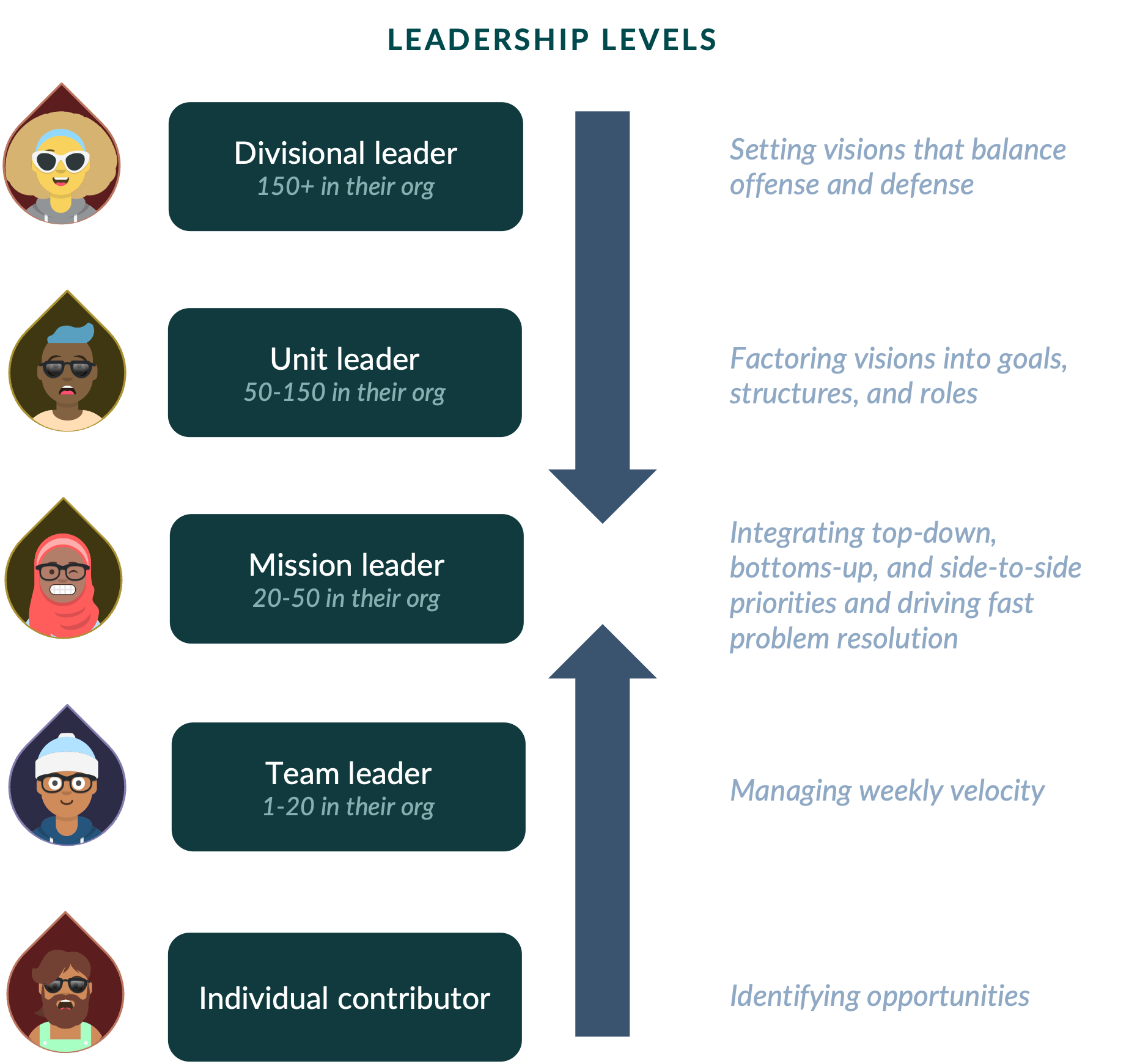
- Divisional and Unit leaders are top-down; they are responsible for setting high-level vision, building operational structure, and breaking down big challenges into missions that colleagues can tackle.
- Team leaders and Individual contributors are bottom-up; they are responsible for driving weekly execution, problem solving, and context-sharing upward.
- Mission leaders are integrative; they are responsible for synthesizing context from both above and below, as well as other Mission leaders, and framing problems in immediately tangible terms so that teams and their leaders can solve them.
Context-sharing, alignment, and maintaining velocity and motivation across all of these layers is no easier than it seems on paper. That's where your leadership rhythms come in.
Align vision, execution, and motivation with cascading Strategy Checks
EOS's 90-Day World loops are great for helping one team stay focused on the most critical items. But how do you ensure...
- ...alignment vertically across leadership levels?
- ...alignment horizontally across business units and teams?
- ...problems are framed as interesting challenges to solve?
- ...teams are building off of what others have done, and not wastefully reinventing the wheel?
- ...visibility into every team's priorities and velocity, up and down the leadership chain?
These are all blindspots of the L10 method.
With Factor, teams conduct AI-assisted Strategy Checks triannually (three times per year). The Strategy Check is a 90-minute meeting where each team aligns on:
- Their purpose
- Their team's strengths, weaknesses, opportunities, and threats
- The top problems they need to solve for the next four months
- Role assignments for each strategy - am I a Follower, Owner, Reviewer, Coach, or Expert?
Crucially, each team's Strategy Check is pre-populated with the results of the Strategy Check of the team above them. This creates a cascade that aligns priorities from the top of the organization down to the front line.
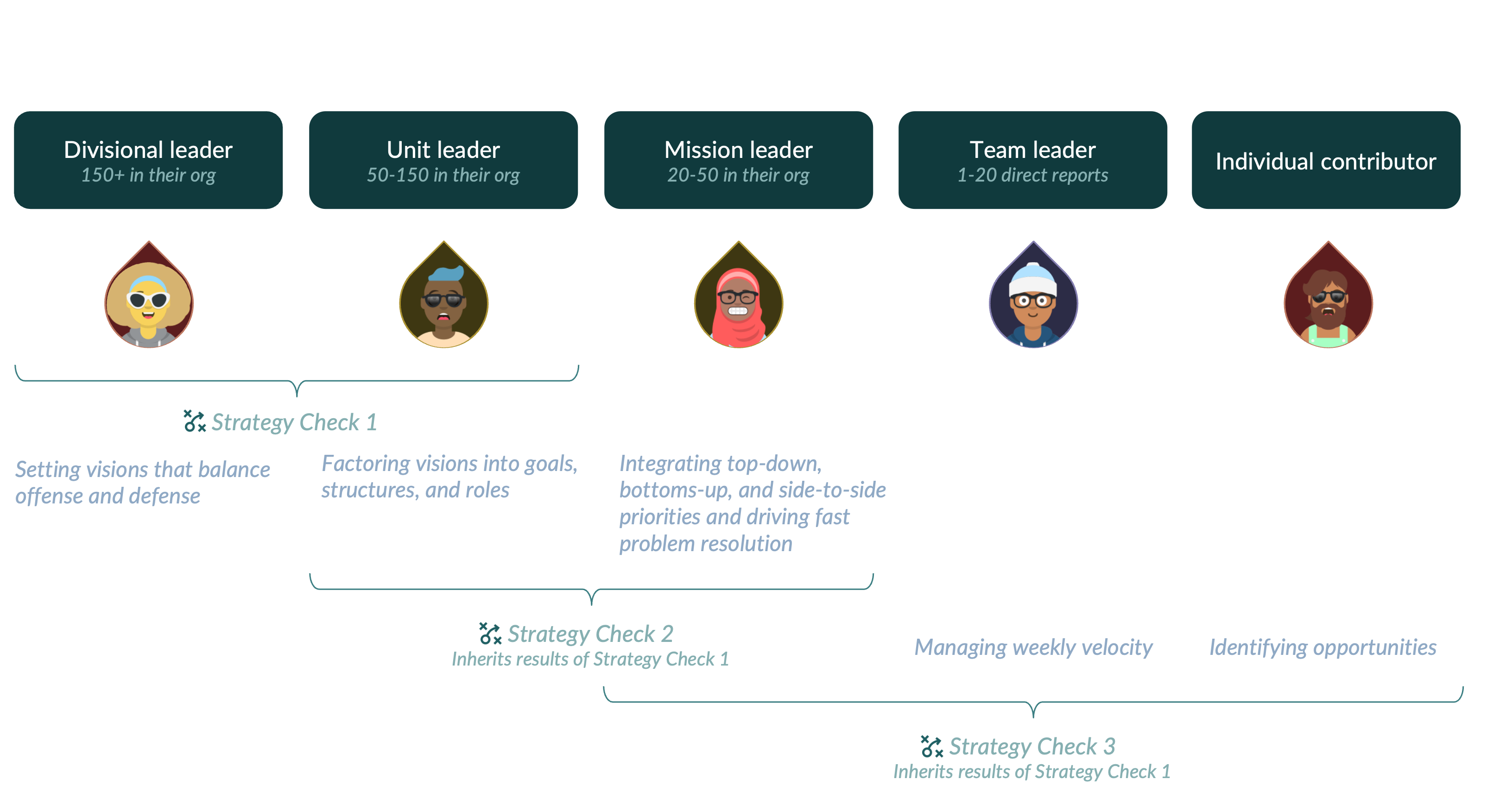
Run weekly rhythms that drive execution and problem solving
With an aligned, impactful strategy in hand, its up to each team to execute, week in and week out.
But execution isn't just a matter of checking off "To-Dos"; it's also about ideating, problem solving, experimenting, and adapting. If you're using EOS, you may be hungry for a playbook that makes these motions easy.
Factor prescribes three weekly rhythms to keep teams on track and adapting where needed:
- Prioritization - Monday, 1 hour, as a team. Hooking back in to the team's Strategy Check, Factor.AI provides a summary of what was accomplished last week and what critical, growth-oriented problems the team needs to solve in the week ahead.
- Problem solving - Wednesday, 1 hour, as a team. Teammates pull up to discuss where they're stuck or would like feedback and advice. For each priority identified in the Strategy Check, teams can use Factor's myriad problem solving features to organize thinking and spur creativity. If the team is truly stuck or wants some quick wins, they can even use AI to generate a robust set of experiments to run.
- Reflection - Friday, 30 minutes, individually. Every colleague pulls up an AI-guided flow to share, for each of the Strategy Check priorities they own:
- What they've accomplished
- What they've learned
- Key decisions made
- Any blockers
- Deliverables for next week
All three of these rhythms create supportive accountability - where it's not about pressure and blame, but rather ownership, growth, and excellence.
Embed high-performing habits at scale with Habit Checks
In growth-oriented organizations, teams don't just need to deliver; they also need to self-improve how they deliver.
The weekly Level-10 rhythm keeps the leadership team honest, but many practitioners note a common shortcoming: EOS progress “gets stuck at the executive level,” never turning the corner into continuous self-improvement. In some cases, this can lead to burnout, or even a victim mentality.
Factor closes the gap with a 90-minute Habit Check - a team interaction, guided by AI:
- Triannual, 90-minute, team-run session. Each team completes a quick Habit Check survey together and gets an instant AI report that spotlights their motivation and the 1-2 habits most worth upgrading.
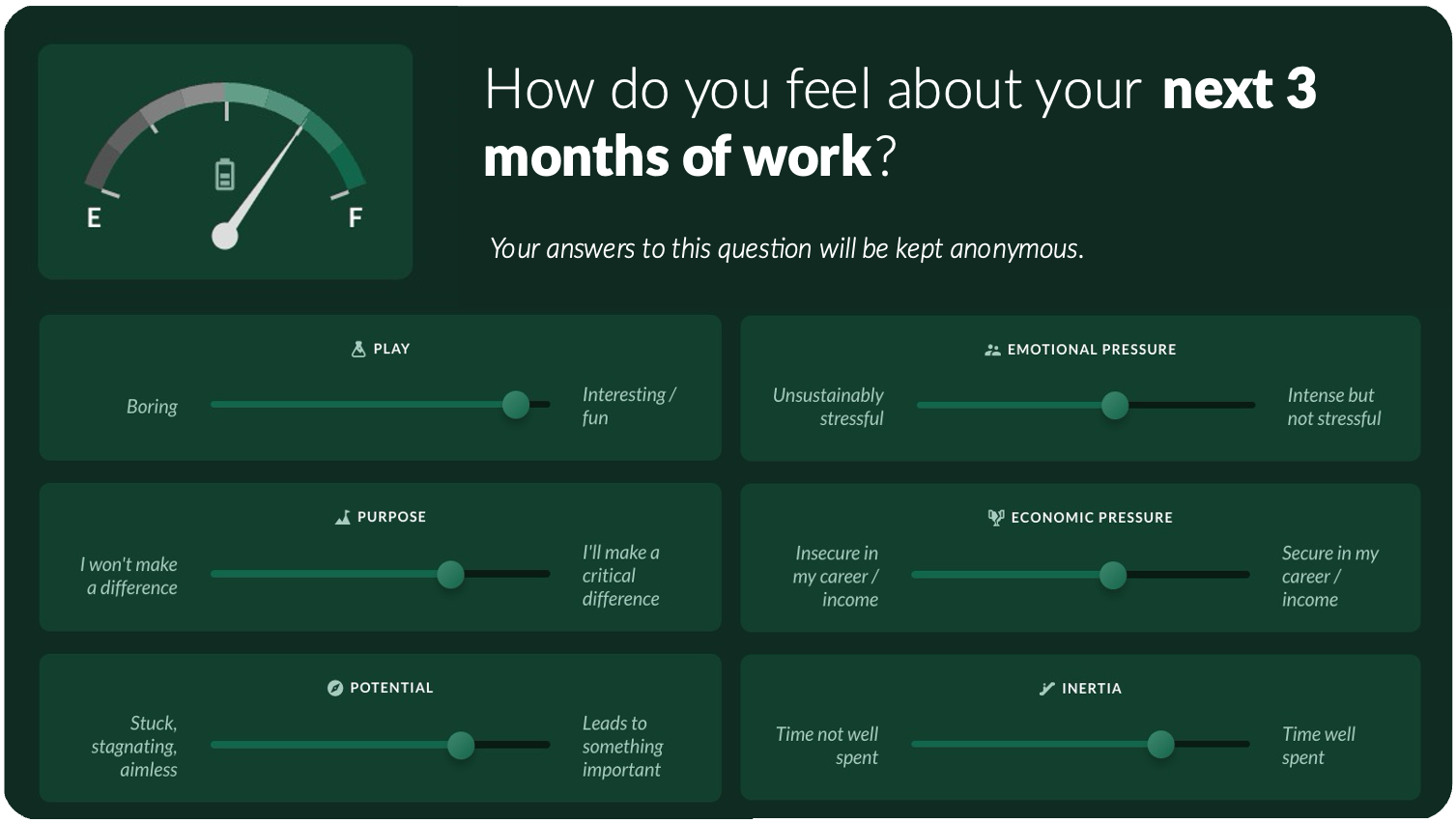
- Forward-looking & action-oriented. The team walks out with a 90-day plan they own—no waiting on HR or HQ.
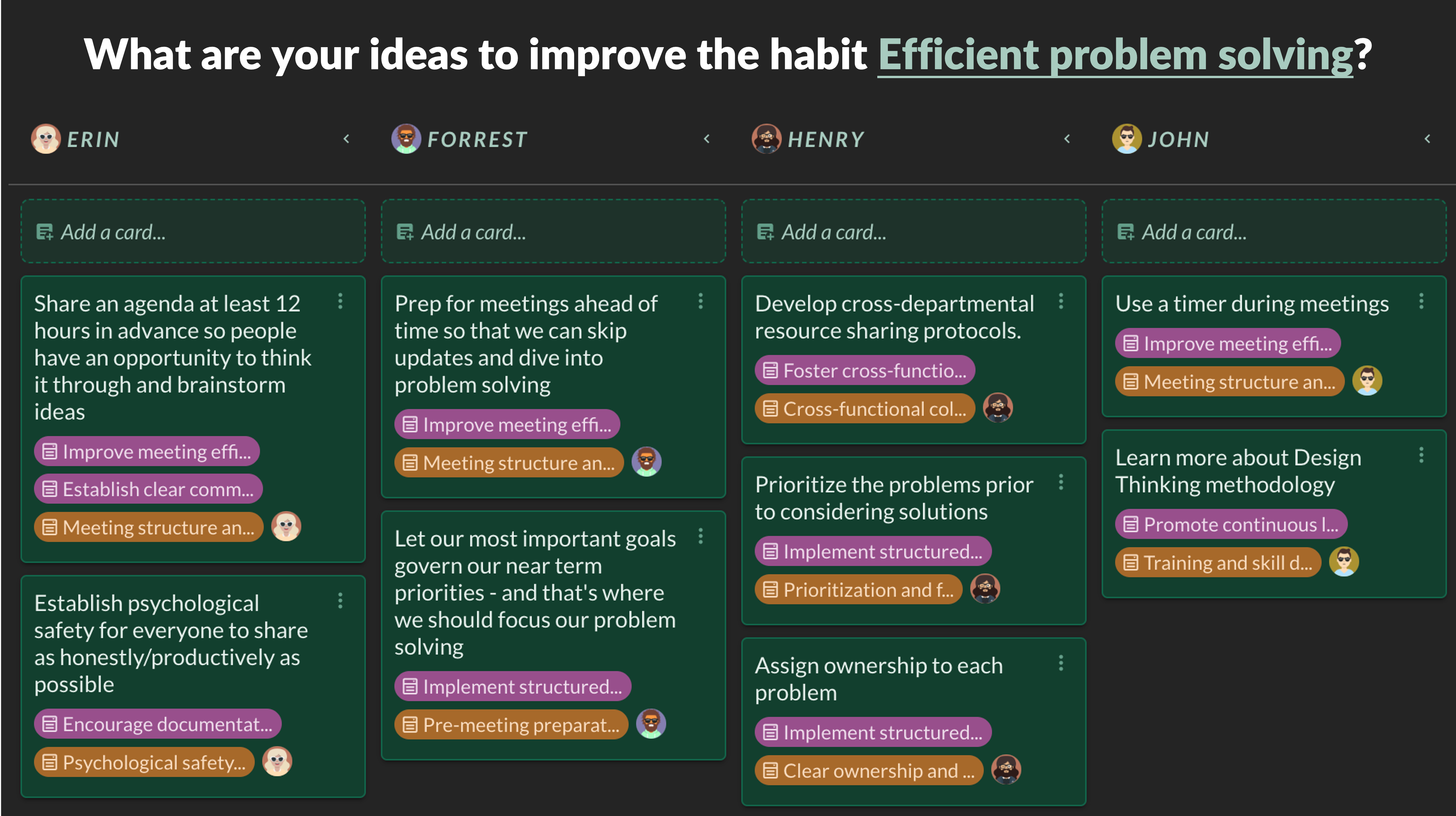
- Built on the science of Play, Purpose & Potential. Local motives drive over twice the performance impact of company-wide moves; Habit Checks put that lever in every team’s hands.
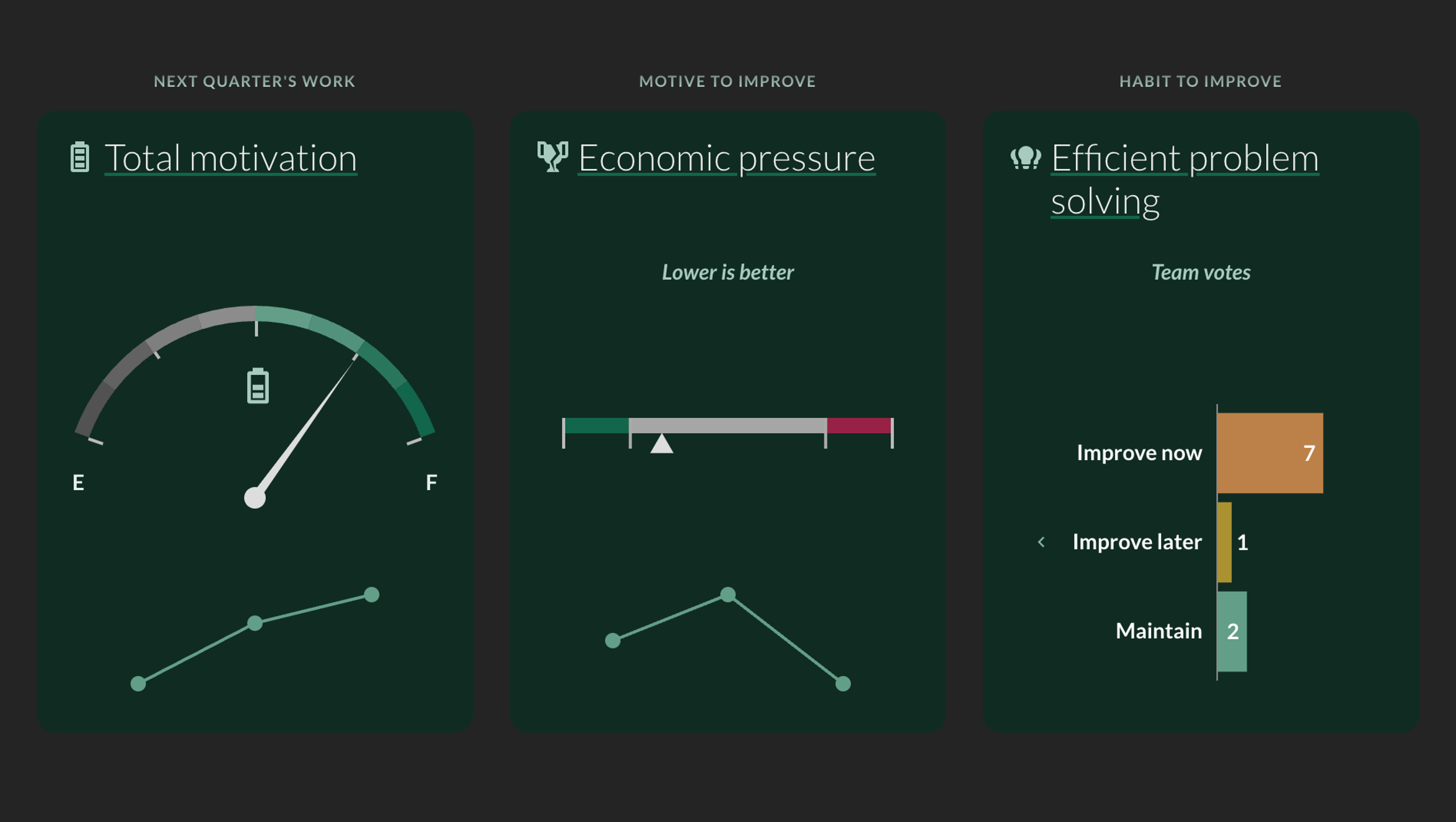
- From “thermometer” to “air-conditioner.” Traditional engagement surveys just measure; Habit Checks prescribe and activate change, giving every group its own L10-grade improvement engine.
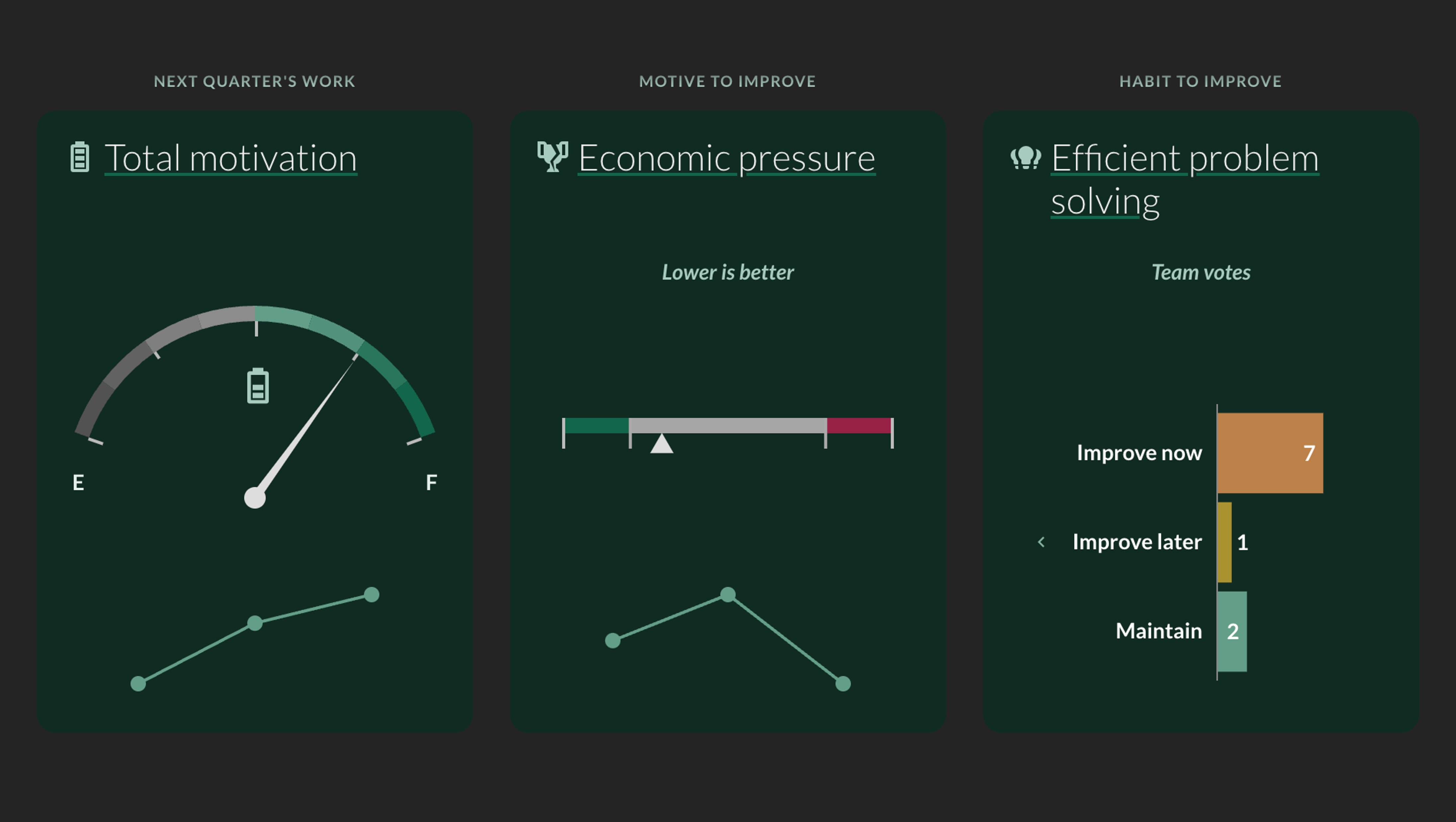
Systematize skill-based learning with Skill Checks
EOS is focused on aligning goals and solving issues, but its toolkit stops at quarterly Rocks and the occasional review. Day-to-day craft development still depends on annual 360s or ad-hoc “feedback,” so individual skills plateau and motivation drifts.
Factor helps organizations build a culture of apprenticeship through AI-guided Skill Checks:
- Triannual, 1-on-1, learning-initiated sessions. Every team member chooses one or two skills from a living catalog; Factor AI instantly drafts a 90-day learning plan they co-own with their manager.
- Positive, forward-looking feedback. No more praise-sandwich or unsolicited critique—Skill Checks frame advice as ideas to try, which research shows accelerates adaptive skill growth.
- On-the-job apprenticeship. Plans focus on real work reps, not classroom training; progress is tracked in a portfolio and validated by expert endorsements.
Companies that adopt this apprenticeship loop see motivation scores jump by ~55 points - four times the boost of traditional “work-life balance” perks.
Bottom line: Skill Checks grow your people, turning every four-month sprint into a measurable step toward mastery instead of a stop-start feedback cycle.
Govern the system with a simple calendar and real-time analytics
One of the things leaders like most about EOS is its easy-to-follow calendar system. Factor provides that same structure, with a set of rhythms that distills organizational leadership down to a predictable, manageable playbook.
Factor prescribes a calendar of annual, triannual, monthly, and weekly rhythms. You can follow the playbook exactly as is, or customize it to your organization - e.g., by shifting around the order, or doing Strategy Checks monthly instead of trianually, etc.
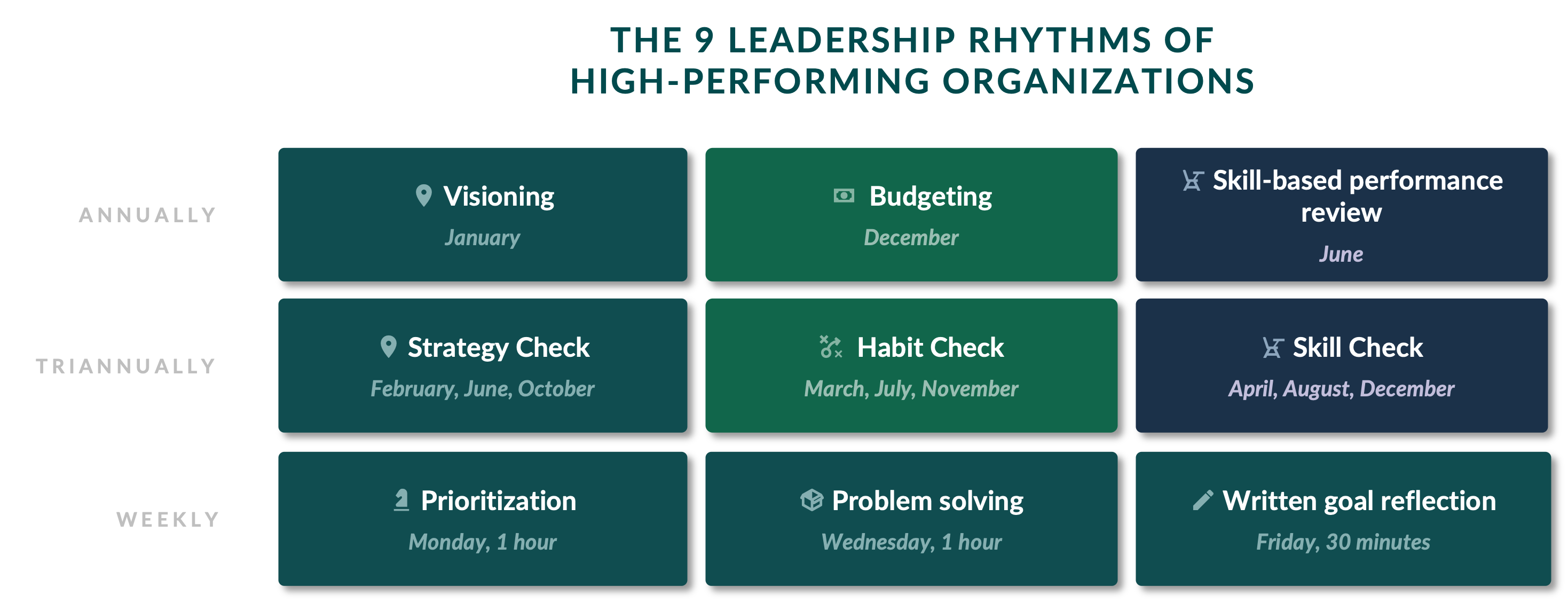
Meanwhile, Factor's Analytics Dashboard provides real-time metrics on all of these rhythms:
- Velocity - are we taking enough action weekly against our top priorities?
- Inclusivity - what percentage of our people are pushing forward critical work?
- Motivation - do we have enough fuel in the tank for the journey ahead?
- Habits - what team habits are most in need of improvement?
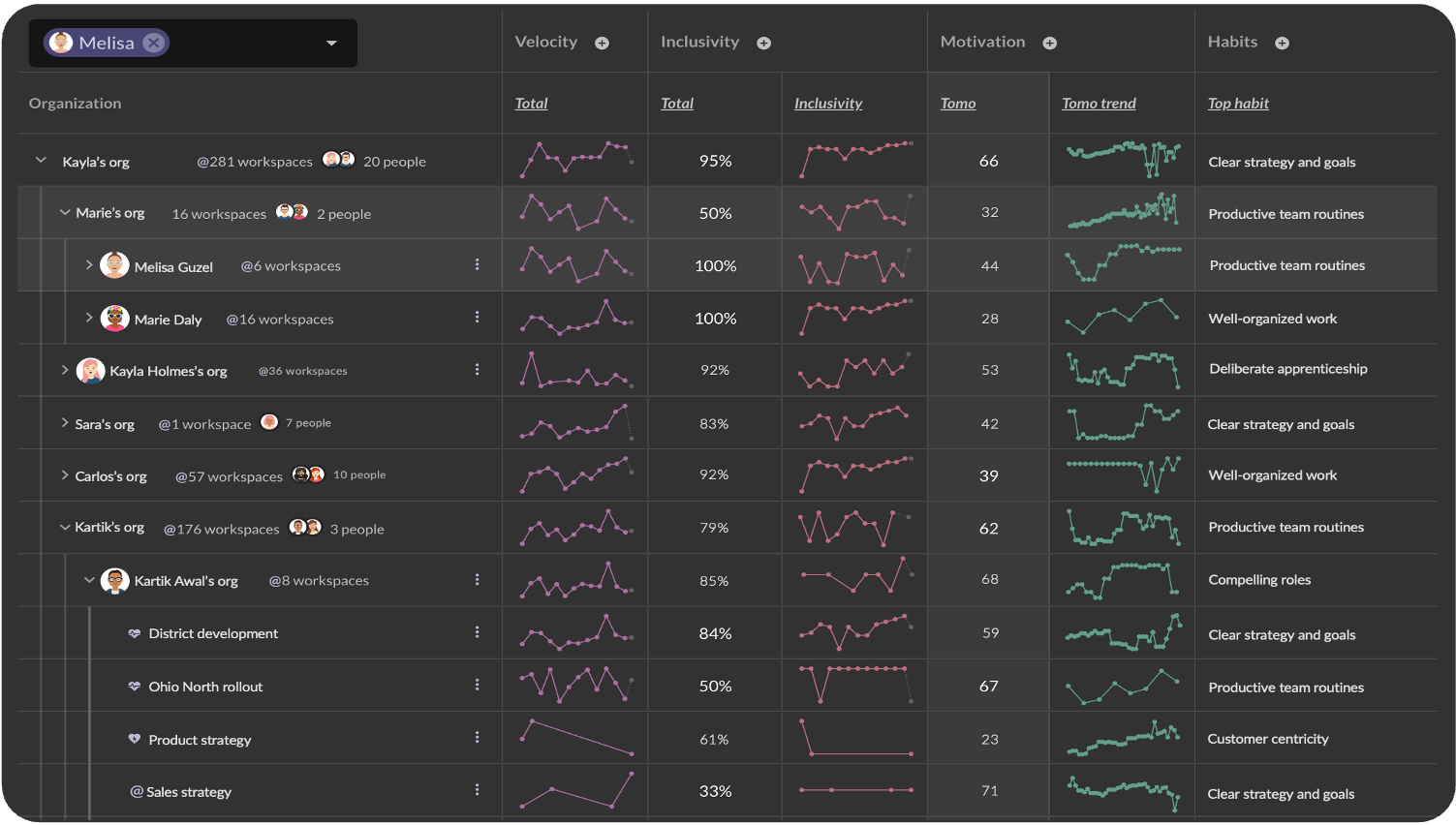
This dashboard allows leaders to see smoke before it turns into fire, and thereby efficiently allocate their precious bandwidth to the teams that most need support.
Your next step toward scalable performance
You chose EOS because you value structure, accountability, and getting things done. Those are essential qualities for any successful business. But as you grow, you need a system that can handle increasing complexity, align multiple teams, foster strategic problem-solving, and support efficient asynchronous work.
Factor is that next step. It builds on the foundation you've created, providing the visibility, structure, and collaborative environment needed to scale effectively, prevent costly misalignments and Type 2 errors, and empower your teams to solve the right problems. It evolves your core operating rhythms to match the demands of a growing, dynamic organization.
Ready to see how Factor can help your growing company perform at its best? Reach out anytime.

